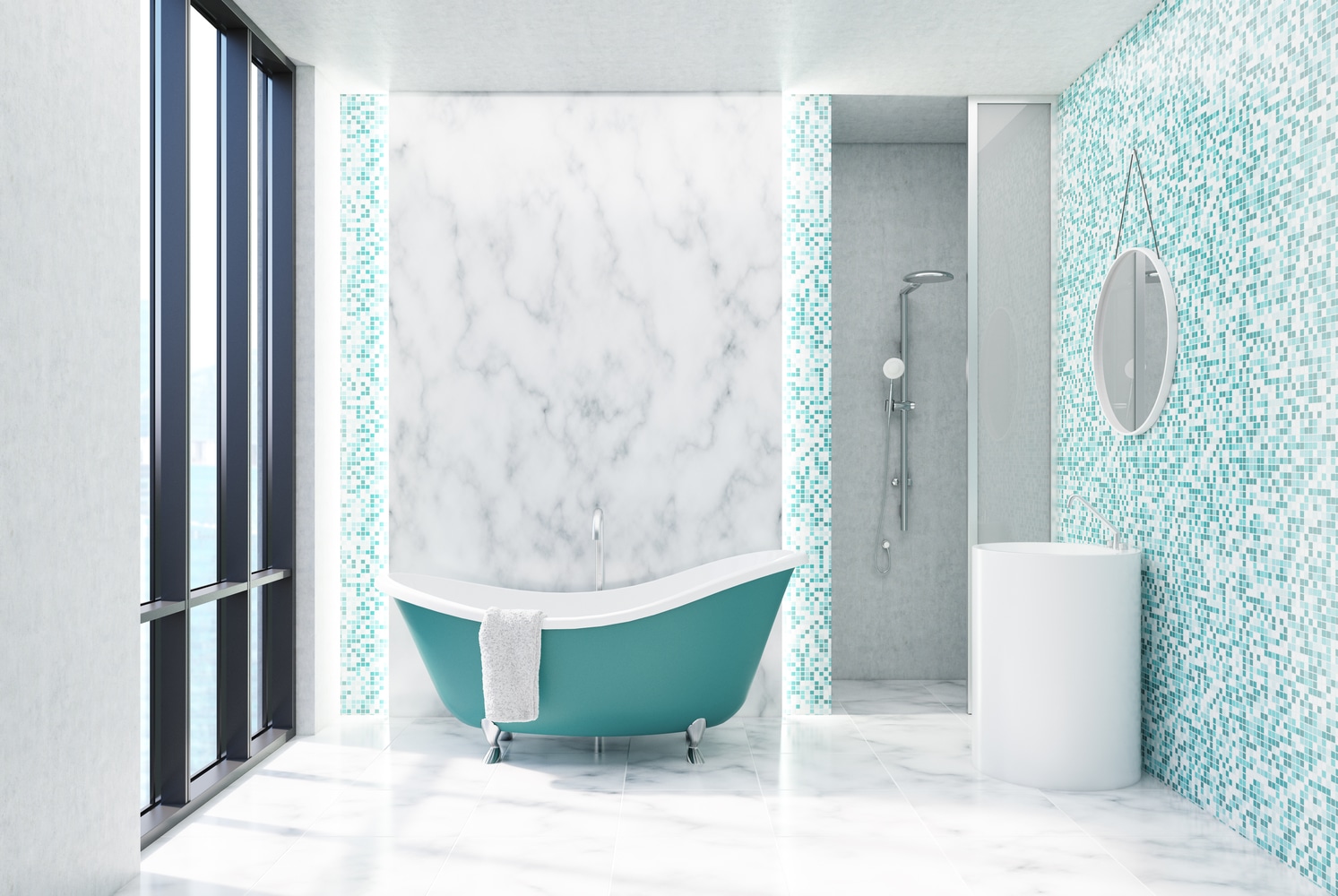
Several types of acrylic caulk include Polyurethane, Siliconized acrylic, and Hybrid caulk. Understanding their uses and characteristics can help you choose the perfect one for your next bathroom renovation project. Read on to learn more.
Understanding Acrylic Caulk: Benefits and Limitations
Acrylic caulk is widely used in various home renovation projects, particularly in bathrooms. Its flexibility and durability make it a popular choice for sealing joints and gaps. One of the significant advantages of acrylic caulk is its ease of application. It adheres well to most surfaces, including wood, metal, and ceramic, making it versatile for different bathroom renovation needs. Moreover, it is water-resistant, preventing moisture penetration which can lead to mold and mildew growth. However, it’s essential to note that acrylic caulk is not entirely without drawbacks. Its durability under extreme temperature variations can be a concern. Prolonged exposure to high temperatures may cause it to lose its elasticity, leading to cracks and gaps over time.
Furthermore, although acrylic caulk is water-resistant, it is not waterproof, which means it may not entirely avert water penetration, especially in highly watery environments like showers and baths. Therefore, for areas constantly exposed to water, a waterproof caulk, such as silicone-based alternatives, might be a superior option.
Acrylic caulk also tends to shrink during the drying process. This means that one application might not be enough to achieve a fully sealed finish. It may require additional layers once the first one has completely cured.
In terms of aesthetics, acrylic caulk is paintable, giving homeowners a considerable advantage. This feature makes it possible to blend the seam to match the color scheme of your bathroom seamlessly. Unlike silicone caulk, which remains glossy and can stand out against matte finishes, acrylic caulk can be concealed easily.
Despite its noted drawbacks, the versatility, ease of application and ability to paint over make acrylic caulk an unbeatable choice in situations where waterproofing is not a high priority. Furthermore, its high adhesion quality makes it reliable for an elongated period, provided it is not subjected to severe thermal variations.
When considering home renovation projects, it’s crucial to understand the advantages and drawbacks of different materials. In the case of bathroom fittings or any project involving sealing gaps or joints, choosing the right type of caulk can make a significant difference to the outcome and longevity of your renovation tasks. While acrylic caulk is an excellent choice for many situations, always consider where and how it will be used to ensure the best results. For more insights into bathroom renovation materials, visit Home Renovation Guide.
The Role of Acrylic Caulk in Bathroom Renovation
In bathroom renovations, acrylic caulk plays a crucial role in ensuring the longevity and aesthetics of the finishes. Its ability to seal joints around bathtubs, sinks, and shower areas helps prevent water seepage, which is vital in a moisture-prone environment like a bathroom. Additionally, acrylic caulk is available in various colors, making it easy to match with different tiles and bathroom fixtures. However, it’s essential to be aware of its limitations. For instance, if the bathroom experiences significant temperature shifts, an alternative caulk might be more suitable due to the potential for acrylic caulk to become less effective in such conditions.
Further exploring this, although acrylic caulk perfectly seals moisture-prone areas in the bathroom, it might not be the best choice under extreme temperature conditions. Frequent variations in temperature can cause the acrylic caulk to contract or expand and lose its sealing capability. This may result in water seeping into the joints around bathtubs, sinks, and shower areas. In other words, the efficiency and effectiveness of the acrylic caulk diminish in an environment with significant temperature swings.
Therefore, under these circumstances, it’s suggested to consider an alternative like silicone caulk, which has the capability to withstand fluctuating temperatures without impacting its sealing power. Silicone caulk tends to maintain its elasticity even in harsh conditions, providing an enduring moisture barrier that acrylic caulk may fall short on.
However, while silicone might be an excellent option for temperature swings, one needs to remember that it comes with its own set of limitations. Unlike acrylic caulk, silicone is not paintable, and the typically clear or white colors may not blend as nicely with the bathroom fixtures and tiles. Additionally, silicone caulk is more difficult to remove, making it less user-friendly in case a change is intended or a mistake is made during application.
Moreover, the durability of any type of caulk significantly depends upon its application. Proper preparation of the surface is crucial. It is equally important to clean the area thoroughly and ensure it’s dry before applying the caulk. Experts also recommend using a thin layer of caulk to prevent shrinkage and cracking.
Ultimately, choosing the right caulk depends on the specific circumstances of each bathroom renovation project. One needs to gauge the environmental conditions, the look and feel of the bathroom fixtures and tiles, and also the skill level and patience of the individual applying the caulk. Each situation calls for different considerations, so a thorough evaluation is essential.
From the acrylic caulk’s color variety and easy application to the silicone caulk’s durability and resistance, each has its own strengths and weaknesses. Understanding these aspects will facilitate a smart choice that contributes to a successful bathroom renovation. For more on bathroom renovation best practices, visit Bathroom Renovation Tips.
Comparing Acrylic Caulk with Other Caulking Options
When considering caulking options for bathroom renovations, it’s important to compare acrylic caulk with its alternatives like silicone or latex caulks. Silicone caulk, for instance, offers superior water resistance and is less prone to shrinkage, making it ideal for areas with constant water exposure. On the other hand, acrylic caulk is easier to paint over and clean, which can be advantageous in maintaining the bathroom’s aesthetic appeal. The choice between these types depends on the specific needs of the renovation project, like the level of moisture exposure and the desired finish.
Furthermore, the durability of the chosen caulk can affect the longevity of the bathroom makeover. Silicone caulk, although more difficult to work with due to its sticky nature, provides an excellent seal against moisture and heat. Many homeowners prefer this option for showers, bathtubs, and sinks that frequently encounter water. Notably, silicone caulk’s water-resistant properties also make it less likely to grow mold or mildew, resulting in a healthier environment.
On the flip side, acrylic caulk can be a popular choice due to its versatility and ease of use. It’s a wonderful option for sealing gaps and cracks around baseboards, windows, and door frames, making it perfect for bathroom renovations that focus not just on water-related fixtures but the overall layout as well.
Many homeowners favor its smoother application and the fact that it can be easily painted over to match the bathroom’s color scheme. However, acrylic caulk may require more frequent maintenance, as it isn’t as durable in the long run compared to silicone. It may crack or become discolored if exposed to extreme temperature changes.
Latex caulk is another alternative that offers middle ground attributes. It’s more water-resistant than acrylic and easier to handle than silicone, making it a feasible choice for those who want a compromise of the two’s best features. Furthermore, latex is naturally resistant to UV radiation, which can prolong the lifespan of the caulk when used in areas exposed to sunlight.
Additionally, factors such as drying time, smell, and cost may influence the decision-making process. Silicone caulk tends to have a longer curing time and a stronger odor than acrylic and latex caulks. However, it may be the most cost-effective option in terms of durability and low maintenance. Discover more about caulking options at Home Improvement Solutions.
Tips for Applying and Maintaining Acrylic Caulk
Proper application and maintenance are key to maximizing the benefits of acrylic caulk. Before application, surfaces must be clean and dry to ensure good adhesion. Applying caulk in a steady, continuous stream and smoothing it with a wet finger or tool can result in a neat and effective seal. Regular maintenance, including cleaning the caulked areas to prevent mold and checking for any signs of wear or damage, is crucial. If cracks or shrinkage are observed, timely reapplication is necessary to maintain the integrity of the seal.
Beyond its basic use, acrylic caulk offers elastomeric properties which means it has excellent flexibility, allowing it to withstand expansion and contraction without compromising the seal. This makes it perfect for high movement areas such as doors and windows. However, due to its water-based formulation, this type of caulk is not recommended for applications in wet areas, like bathrooms or kitchens, unless it’s labeled as suitable for such conditions.
When applying acrylic caulk, use a high-quality caulk gun to precisely control the pressure and speed, thus ensuring the caulk goes exactly where you want it and prevents over-applying. Always start at one endpoint of the joint and apply the caulk towards the other end in a single, fluid motion. To get a smooth, professional finish, tooling or smoothing the caulk with the back of a spoon, a caulk smoothing tool, or a wet finger is an effective method.
To maintain the efficacy of the seal, always clean the caulked areas regularly. Use a simple mixture of bleach and water to prevent the grime buildup and to deter any mold growth. Moreover, you should periodically check the caulked areas for any signs of wear or damage, such as peeling, cracking, or discoloration. Wear or damage could be indicative of extreme weather conditions, regular wear, or poor application. If any of these signs are observed, a timely reapplication is essential with due attention to the removal of old caulk before applying a new layer.
The lifespan of acrylic caulk varies on the level of exposure to weather conditions, but generally, it lasts somewhere between 5 to 10 years. If the caulk remains in good condition beyond this time, it’s not necessary to replace it. But it’s always a great idea to follow best practices for maintenance and health checks, to ensure your seals are always performing optimally. For detailed DIY tips, visit DIY Home Projects.
Innovations and Future Trends in Caulking Technology
The caulking industry is constantly evolving, with the development of new products and technologies. Acrylic caulk formulations are being innovated to enhance durability, flexibility, and resistance to environmental factors. Future trends may include the introduction of eco-friendly caulks with lower VOC emissions, which can contribute to healthier indoor air quality. These advancements not only improve the performance of caulks in bathroom renovations but also align with the increasing environmental consciousness among homeowners.
In recent years, the caulking industry has witnessed significant advancements in product formulations and technologies. Manufacturers are continuously striving to improve the durability, flexibility, and resistance of acrylic caulk. These innovations aim to provide long-lasting solutions for various applications, including bathroom renovations. Additionally, the industry is embracing eco-friendly alternatives with lower VOC emissions, which can have a positive impact on indoor air quality.
The demand for eco-friendly caulks is on the rise, driven by the growing awareness of environmental issues among homeowners. With the introduction of low VOC caulks, consumers can now choose products that not only meet their functional requirements but also contribute to a healthier living environment. This shift towards sustainable options reflects the changing preferences of homeowners who prioritize both performance and environmental impact.
The development of eco-friendly caulks is not only limited to reducing VOC emissions but also encompasses other environmental considerations. Manufacturers are exploring the use of renewable and biodegradable materials in their formulations. By incorporating these sustainable ingredients, caulks can further minimize their environmental footprint and contribute to a more circular economy.
In addition to environmental benefits, the advancements in acrylic caulk formulations also offer improved performance characteristics. These include enhanced adhesion, flexibility, and resistance to cracking or shrinking. These properties ensure that caulks can withstand the stresses and movements commonly experienced in bathroom renovations, resulting in longer-lasting and more reliable installations.
The continuous evolution of the caulking industry is driven by a combination of market demand, technological advancements, and environmental consciousness. Manufacturers are investing in research and development to create innovative solutions that meet the evolving needs of consumers. By staying at the forefront of industry trends and embracing sustainable practices, the caulking industry is poised to make significant contributions to both the construction sector and environmental sustainability. Stay updated on the latest in home renovation technologies at Innovative Home Solutions.
Polyurethane caulk
Polyurethane is a chemical composed of glycol and an isocyanate that occurs when those two substances are combined. When used as caulk, it can also be paintable.
Advantages:
- It is water resistant which makes it ideal for use in areas exposed to moisture, such as bathrooms and kitchens.
- It is corrosion-resistant and can be used on metal surfaces.
- It is flexible, so it can expand and contract with the movement of your home without cracking.
- It is very durable and long-lasting.
Disadvantages:
- When first applied, it has a strong odour, so ventilate the area well.
- This caulk is water resistant and not waterproof
- It can be difficult to apply smoothly.
- It requires a solvent (such as mineral spirits) to clean up.
- Polyurethane caulks are sensitive to UV radiation. The joint’s surface may show fine cracks and deterioration after prolonged exposure.
- Polyurethane caulks don’t perform well with super cold or hot temperatures.
Siliconized acrylic caulk
While the siliconized acrylic caulk is not as durable as polyurethane, it is easier to work with since it can be cleaned up with water. This caulk is also better tolerated by those who have sensitivities to chemicals. In addition, siliconized acrylic caulking can be painted over after application. The added silicone makes the caulking more resistant to water and flexible.
Before using Siliconized acrylic or polyurethane caulk, you must ensure the surface is clean and dry. They must be applied correctly to avoid cracking or chipping the paint. Silicone caulk is preferred for sealing in colder temperatures as polyurethane will crack and tear in cold weather. Furthermore, polyurethane does not like to be exposed to extreme heat cycles. While the silicone caulk will form a permanent bond, it will not adhere well to wood, which isn’t a good material for sealing exterior walls.
Hybrid caulk sealant
A hybrid caulk combines qualities of silicone and acrylic latex. These materials can be mixed in the same container, resulting in a flexible, water-soluble caulk. Despite the name, this type of caulk is not as effective as silicone. Its high filler content detracts from its overall performance.
Solvent-based caulk is best for roofing projects, as it doesn’t degrade when exposed to sunlight. Another option is the plumber’s putty, which is more suited to pipes and walls. A hybrid caulk combines the best qualities of both caulk and sealants. It is easier to use than latex and silicone but not as versatile as acrylic latex. A high-quality hybrid caulk is typically more expensive than its counterparts.
Hybrid sealants are versatile and easy to apply with a caulking gun. They are formulated to be weatherproof, but they will also not dry out or shrink after exposure to rain. Because of their flexible nature, they can be applied to almost any surface. They are also paintable, which is a great bonus. And the best part is that they are environmentally friendly and have a low VOC content compared to other sealants.
Key Considerations Choosing a Acrylic Caulk For Your Home in Metro Vancouver.
1. Expertise in Bathroom Renovation Materials:
A primary consideration is the company’s expertise in using materials like acrylic caulk. You want to choose a business that understands the different types of caulk – acrylic, silicone, latex – and their specific applications in bathroom renovation. The right choice can impact the longevity, aesthetics, and functionality of the bathroom. For instance, acrylic caulk is favored for its paintability and ease of use, but its suitability depends on the bathroom’s exposure to moisture and temperature variations.
2. Knowledge of Local Climate and Material Suitability:
The local climate of the city plays a crucial role in material selection. A business that understands how different caulking materials behave in the city’s specific climate conditions can provide better guidance. For example, in areas with high humidity or temperature fluctuations, a more durable or flexible caulk may be necessary over standard acrylic caulk.
3. Reputation and Customer Reviews:
Reputation is a cornerstone in choosing a renovation business. Look for companies with positive reviews, especially those that mention specific projects involving bathroom caulking or renovations. Testimonials that speak to the company’s professionalism, quality of work, and reliability in using materials like acrylic caulk are particularly valuable.
4. Customization and Design Expertise:
A business that offers customization options and demonstrates design expertise is preferable. This includes advice on the color and type of caulk that best suits your bathroom’s overall design. Acrylic caulk comes in various colors and textures, and a knowledgeable business can help match these with your tiles, fixtures, and bathroom theme.
5. Compliance with Building Codes and Standards:
Ensure the business is well-versed in the city’s building codes and standards. This includes the use of materials like acrylic caulk in a way that complies with local regulations, particularly in areas like moisture resistance and air quality (VOC levels in caulk).
6. After-Service Support and Warranty:
After-service support is crucial. Choose a business that provides a warranty on their work, especially for key renovation aspects like caulking. This shows they stand behind their work quality and the materials used, such as the durability and application of acrylic caulk.
7. Cost-Effectiveness and Budget Considerations:
Finally, consider cost-effectiveness. The cheapest option isn’t always the best, especially when it comes to long-lasting materials like acrylic caulk. A business that offers a fair price for high-quality work and materials is ideal. They should be able to provide a detailed quote that includes all aspects of the renovation, including the type and cost of caulk used.
Choose Canadian Home Style for your Vancouver Bathroom Renovation.
Canadian Home Style is your family-owned and operated bathroom remodeler in North Vancouver, BC. We hold the highest standards in the industry and provide complete bathroom renovations across the Lower Mainland with an extended warranty. We always keep up to date with the latest trends and are proud members of the NKBA National Kitchen and Bath Association. In addition, we have won the Consumer’s Choice Awards back-to-back in 2021, 2022, 2023, and 2024 for our commitment to business excellence. We are considered one of Metro Vancouver’s highest-rated kitchen and bath design and renovation experts. Book now to visit our North Vancouver showroom, where you can get expert advice from one of our kitchen and bath designers. We’re happy to be a part of your journey with your next bathroom renovation project in Metro Vancouver.
Our mission is to help homeowners create beautiful homes that reflect their lifestyles while reducing energy consumption and conserving resources. We provide our clients with innovative products, services and education. We aim to become Canada’s leading sustainable kitchen and bath design and renovation provider. Our values include integrity, respect, honesty and transparency. These principles guide us as we strive to provide outstanding customer service.
We believe that our success depends on the success of our clients and their customers. We work hard to ensure our clients get the most out of their investments. Our team consists of highly skilled professionals who are experts in their field. They have years of experience working together and know what works and what doesn’t. They understand how to solve problems quickly and efficiently. We are committed to providing excellent customer service. We listen carefully to our client’s concerns and suggestions. We take these into account when planning and executing projects. We always strive to exceed expectations.
Why Choose Us?
1. Mastery in Acrylic Resin-Based Products: Canadian Home Style demonstrates exceptional expertise in using acrylic resin-based products like acrylic caulk. This type of caulk is renowned for its strong adhesion and flexibility, making it an excellent choice for sealing joints and cracks in various surfaces. Their proficiency ensures that the caulk adheres properly, providing a durable and long-lasting seal.
2. Comprehensive Understanding of Caulk Varieties: Understanding the nuances between different caulk types, including acrylic, polyurethane, and solvent-based options, is crucial. Canadian Home Style’s expertise in this area ensures that they can recommend the best type of caulk for your specific needs, whether you’re dealing with wood, ceramic, or other materials.
3. Expertise with Polyurethane and Solvent-Based Caulks: For projects where polyurethane or solvent-based caulks are more suitable, Canadian Home Style is well-equipped to provide these services. Their knowledge extends beyond acrylic caulk, ensuring that every project gets the right material for the best outcome.
4. Commitment to Low VOC Products: In today’s environmentally conscious world, Canadian Home Style’s commitment to using products with low volatile organic compounds (VOCs) is significant. This approach aligns with health and environmental standards, providing safer options for indoor air quality without compromising on quality.
5. Local Expertise in Canada and Vancouver: Understanding the local climate and environmental conditions in Canada, particularly in Vancouver, is crucial for effective caulk application. Canadian Home Style’s local expertise ensures that the products used, such as acrylic caulk, are suitable for the region’s specific weather conditions, offering better durability and performance.
6. Superior Adhesive Solutions: The adhesive quality of a caulk is paramount in its effectiveness. Canadian Home Style offers high-quality adhesive solutions, ensuring that the caulk bonds well with various surfaces, providing a watertight and airtight seal, which is essential in regions with variable climates like Vancouver.
7. Empowering Do-It-Yourself Enthusiasts: For DIY enthusiasts, Canadian Home Style offers valuable guidance and supplies. Their expertise in acrylic and other caulks can help DIYers choose the right products and apply them correctly, ensuring professional-level results even in self-conducted projects.
8. Specialization in a Variety of Surfaces: Whether your project involves wood, ceramic, or other materials, Canadian Home Style has the experience and knowledge to ensure the best caulk application. Their expertise guarantees that regardless of the surface, the caulk application will be done with precision, enhancing both functionality and aesthetics.
Services We Offer:
Main Areas of Service in British Columbia:
- Vancouver
- North Vancouver
- West Vancouver
- Burnaby
- Coquitlam
- Squamish
- Whistler
Did you miss our previous article…
https://canadianhomestyle.com/bathroom-renovation/designing-a-hotel-bathroom/





